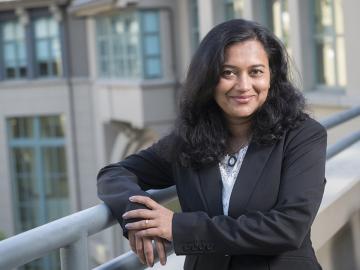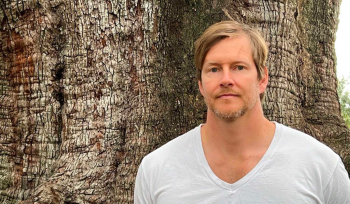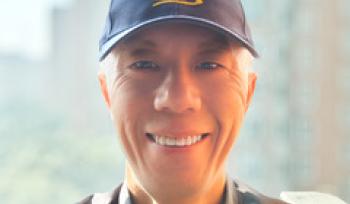Subashree Krishnan is the Founder & Director of Nimaya Robotics Pvt. Ltd. Her vision is to help millions of special children progress towards independent living. Nimaya’s products help enhance their psychomotor & cognitive skills using groundbreaking innovation in the field of robotics-based therapy.
Nimaya Robotics Forms to Benefit Autism Therapy
Children with Autism Spectrum Disorder (ASD) have a broad range of challenges with social, communication, and fine motor skills, which makes them dependent on their care givers. The largest problem with these kinds of learning disabilities or developmental disorders is that a cure has not been found yet. So, the alternative is therapy, which helps individuals acquire every skill that they need to live, to learn, and to earn a living.
Nimaya Robotics was created by the convergence of knowledge and experience of its two founders. Subashree Krishnan, an entrepreneurial business leader with a history of launching global solutions for several high-tech companies, partnered with her niece, Dr. Ramya S. Moorthy, Ph.D., a robotics pioneer in the application of robotics to learning psychomotor skills in children with Autism. “With 1 in 59 children being diagnoized with ASD, we are looking at a huge problem, both socially and economically. It's a domain that's innovation starved, and we are trying to bring innovation into the field,” affirms Subashree.
Berkeley Executive Program in Management (BEPM) Serves as Launchpad
Subashree was enrolled in the Berkeley Executive Program in Management (BEPM) at Berkeley Executive Education and created Nimaya Robotics during the program. “In nine months, we took an idea from just an idea to actually launching a company with our first paid customer,” Subashree stated.
BEPM, a year-long program with modules in India, Berkeley, CA, and online is designed to prepare participants for the next leadership level through a deeply relevant, immersive, and dynamic learning experience. Actively leveraging Berkeley’s unique strengths, the program exposes participants to the latest theories and best practices in business, from strategy to team leadership, influence, innovation, product management, and more.
The program includes a capstone project that focuses on implementing the learning from the program. “The reason I wanted to be in BEPM is that I wanted to do something socially impactful and learn the skills to do that at scale,” Subashree shared as she celebrated being the winner of the BEPM Capstone Project for the 2017-2018 program.
Robotics Research Identifies Gap
As Dr. Moorthy worked toward her Ph.D., she spent nearly five years of innovative research in robotics applied to autism therapy. Focusing on an unstudied area, she worked with occupational therapists to understand autism therapy and realized that there was a gap in research and development in the field of psychomotor and cognitive skills. Through those five years, Dr. Moorthy designed and developed several robotics based training devices to help children learn these skills, and conducted trials with 55 children across 4 centers.
Dr. Moorthy demonstrated a sixty percent acceleration in the acquisition of these skills compared to conventional methods. The key to her success is the comfort special children have with robots and active learning incorporated into the toy-like design of her devices.
“Our device looks like a wooden toy that’s fun for the children to engage with. At the same time it's a very pragmatic, cost effective solution. We're very sensitive to the needs of the children. We pay attention to details - everything from providing just enough stimulus, to ergonomic design to using organic paint is taken care of. We already see results. For example, one of our 13-year-old students learned a new grasp in just three sessions. He is also learning to respond to directional cues and turn-taking. Our products are designed to teach more than 20 unique finemotor and cognitive skills that are very, very fundamental to life. I think we're changing lives in that way,” noted Subashree.
BEPM Program and Framework Help in Key Launch Decisions
“Nimaya Robotics was launched with BEPM’s Program faculty and my classmates' encouragement. They lent their support and expertise in areas where I needed help. It was a great ecosystem,” Subashree recounted.
“With every course in BEPM I attended, I had something to take away and apply to my start-up. As an entrepreneur, you have an idea, and you can get very distracted trying to do a lot of things at the same time. Should I raise funds? Should I do my market survey? My validations or my website? That's the typical struggle of an entrepreneur. BEPM, I felt, gave me a structure. With each capstone review submission, we were asked to refine our idea. Asked to add more elements to it. For example, the very first thing was clarity of the problem statement - What was the problem I was trying to solve? What's the market size? What will be my 3 year revenue projections? BEPM modules helped me put more rigor into it, to find my thinking,” Subashree affirmed.
“Following the Leading Innovation module, I did ethnographic customer interviews in a more structured way to refine our customer segment and understand the market better. I talked to fifteen centers in Bangalore and twenty-five parents. I ran our ideas by them and showed some videos from my partner’s research. We received good feedback,” disclosed Subashree. “BEPM gave me frameworks to apply my findings.”
Nimaya Robotics’ Creates ‘Robotics as a Service’ Model and Offers Subscriptions
“BEPM also helped me to refine our business model to be a ‘Robotics as a Service’ Model,” shared Subashree. “Those ethnographic interviews really helped me understand the pain point. Parents are stretched regarding spending money. For example, in the US on average, a family would spend forty to sixty thousand dollars every year in therapy with no guaranteed result.”
“What takes six months in conventional therapy, we were able to lower to three weeks. That's the beauty of it,” Subashree pointed out. “With an As-a-Service Model our customers don’t have to invest in something that will cost them a thousand dollars and will not know what to do with it once their child acquires the skill. Instead, once their child masters a skill, they can get the next robotic training device in their subscription which addresses other skills.”
BEPM Program Successes Help Launch Company
“In every capstone review, we got pushed to the next level. I gained great insights. We had to think about pricing and market segmentation. Then, what are your risks? What are your operational plans? What is your marketing plan? Do we need cost-based pricing or value-based pricing models? How do we determine value? What happens if we scale our business? BEPM gave me the framework to think it through very clearly and start with a clear business strategy and roadmap. I think that's how I am where I am.
I'm extremely thrilled that we were able to launch the company with our first paid customer in September of this year and have excellent traction in the field! Nimaya means change in Sanskrit. Our vision is to change the lives of millions of special children around the world creating a huge social impact.” Subashree concluded.
Learn more about Nimaya Robotics with this video



